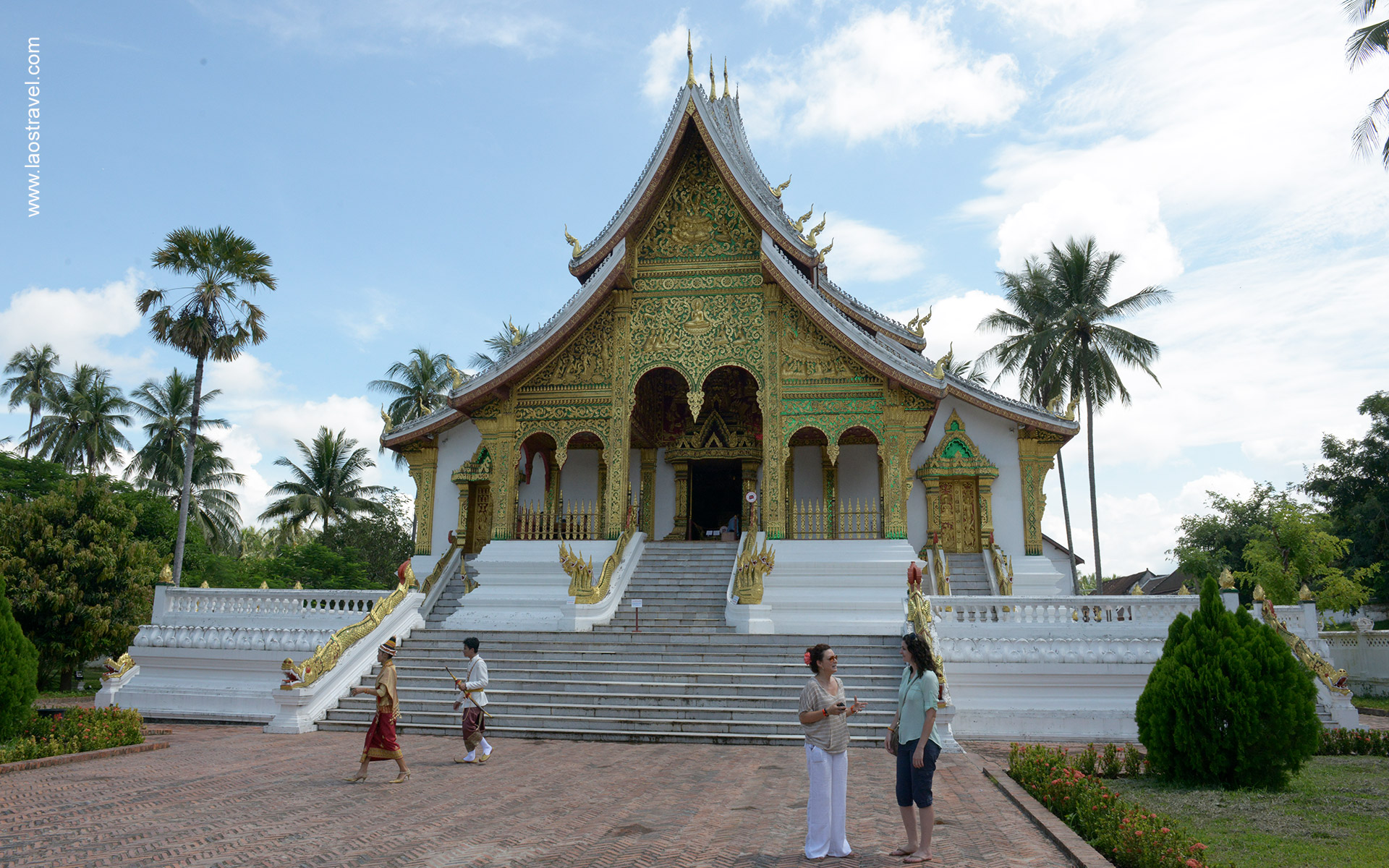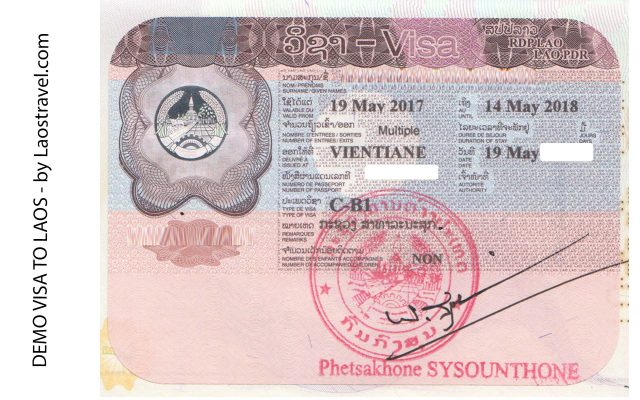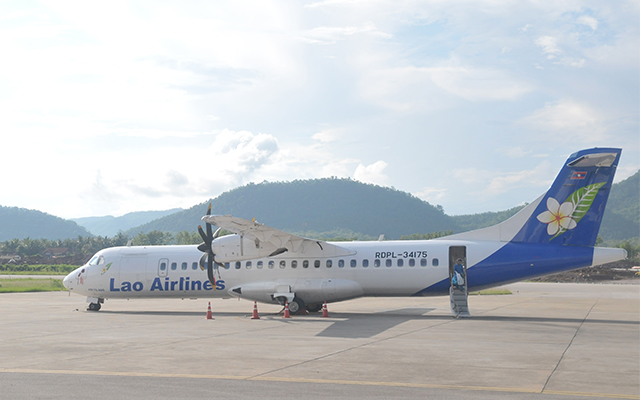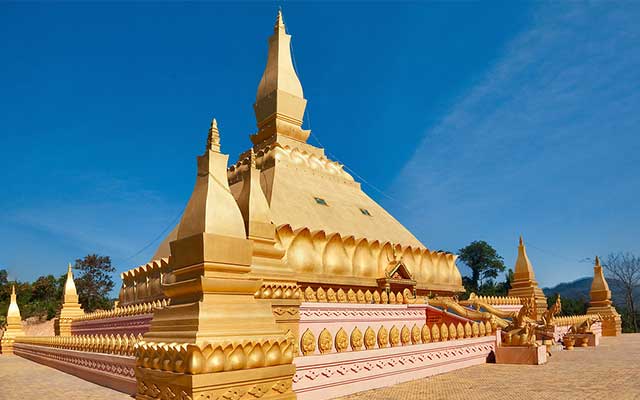Plain of Jars, Laos – A Complete First-Hand Guide
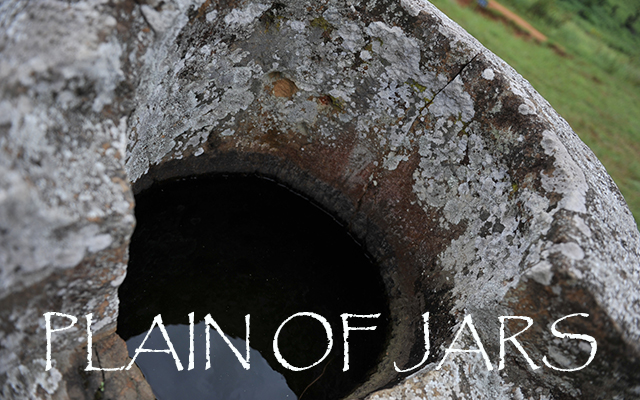
Plain of Jars, Laos - A Complete First-Hand Guide
Scattered along the Muong Phuon Plateau, the Plain of Jars is one of the most important prehistoric sites in Southeast Asia, located near Phonsavan commune, in the province of Xieng Khuang in Laos. This destination has been a challenge to Laos and international archaeologists with many myths and its origin is still unknown until now.
There are about 2000 jars dating from the Iron Age (500 BCE to 500 CE, and possibly up to as late as 800 CE) scattered in many locations of the province. Due to unexploded bombs, mines and ammunition, not all sites have been put in operation yet. At present, seven jar sites that are open for tourists, includes Site 1 (most visited), Site 2,3, Site 16 (near the old capital Xieng Khouang, Site 23 (near the hot spring in Muang Kham), Site 25 (in the largely unvisited Phou Kout Dist.) and Site 52 (near Hmong village where is only accessible by foot).
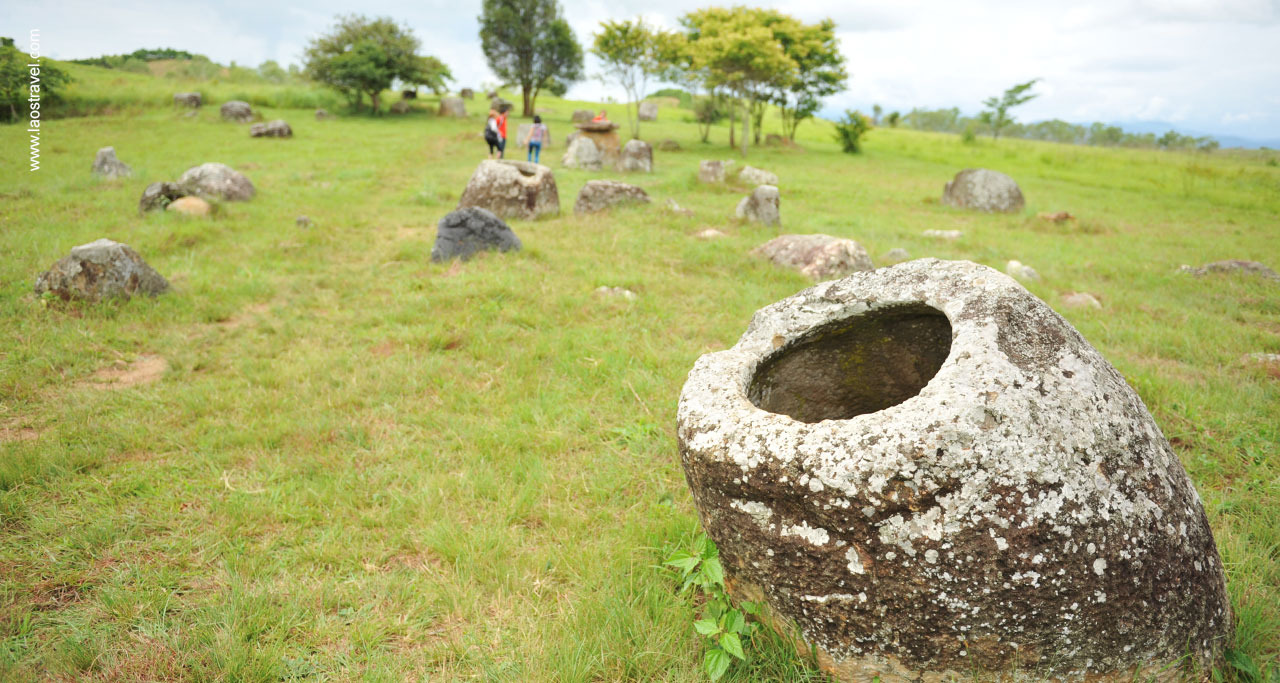
Megalithic Jar Sites in Xieng Khuang – Plain of Jars – the 3rd World Cultural Heritage of Laos recognized by UNESCO.
From a distance, the Plain of Jars is like a chess board while the jars are like amazing plump chess pieces. Coming closer, visitors can see the fantastic mixture without any fixed arrangement. Many jars are completely protruded on the ground while the others can be partially sunk on the ground. The shapes are also different, including the knot, the straight mouth, the square… same as their various sizes up to 3m high in weight up to several tons.
On 6 Jul 2019, Megalithic Jar Sites in Xieng Khuang – Plain of Jars officially became a World Heritage Site after 20 years of waiting for approval which is the 3rd World Cultural Heritage of Laos recognized by UNESCO, after Town of Luang Prabang (1995) & Vat Phou and Associated Ancient Settlements Within The Champasak Cultural Landscape (2001).
Touching the rough, time-green “milestones” lying quietly on the ground, people vaguely feel the great historical mysteries behind. Let’s discover all values of this destination through this post.
Contents
Plain of Jars History
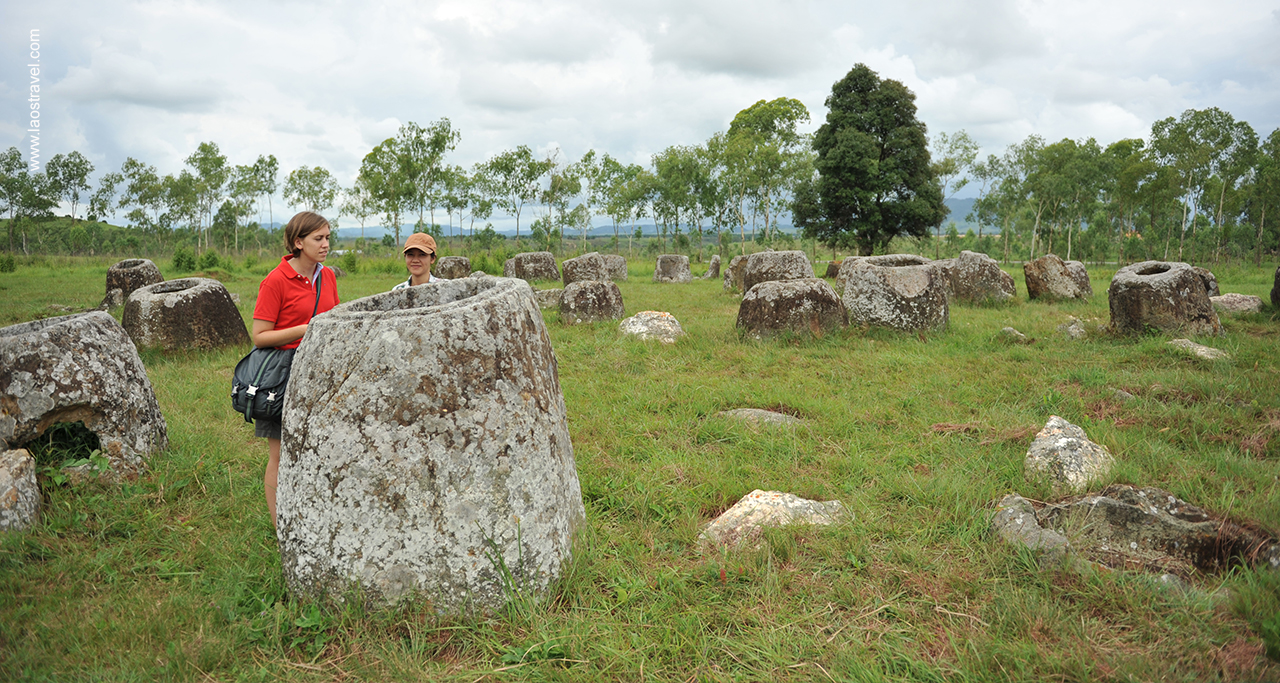
The mystery in Plain of Jars History attracts many visitors or scientists to come and discover.
So far, the history of the stone jars has been still put in mystery, and their certain purpose has also been unknown, but are believed to be about 1,500 – 2,000 years old.
According to the Laotian legend, it claimed that there were giants who once settled in this area and created jars to store rice wine which was brought to commemorate the victory of their King Khun Cheung against the enemy.
Another idea said that these jars were used to store monsoon rainwater which could be provided for caravan travelers along their journey as the water was not readily available on the easiest footpaths when it occurred seasonal.
Following the theory from most archaeologists, they believe them to be urns. In 1930, French archaeologist Madeleine Colani began surveying the area and concluded that the stone jars were related to prehistoric burial rites when she discovered a cave housing human remains such as burned bones and ash. Excavations by Laotian and Japanese archaeologists over the years also helped support this hypothesis when many remains, burial objects and ceramics were found around the stone jars.
Even the materials that make these jars are controversial. Some say they were made of limestone, others say they were made of laterite and marble mixed with some special ancient and now lost materials.
At present, all jars are empty with the only single jar with lib. Some other lids have been found between the jars which were made of stone, wood…
Archaeologists have yet to come to a conclusion. However, research is still struggling as the jars are one of the most dangerous archaeological sites in the world. And no matter how many theories are put forward, all have contributed to the weaving of a field of legendary jars, attracting visitors from all over the world to come and discover.
Outstanding Values of Plain of Jars
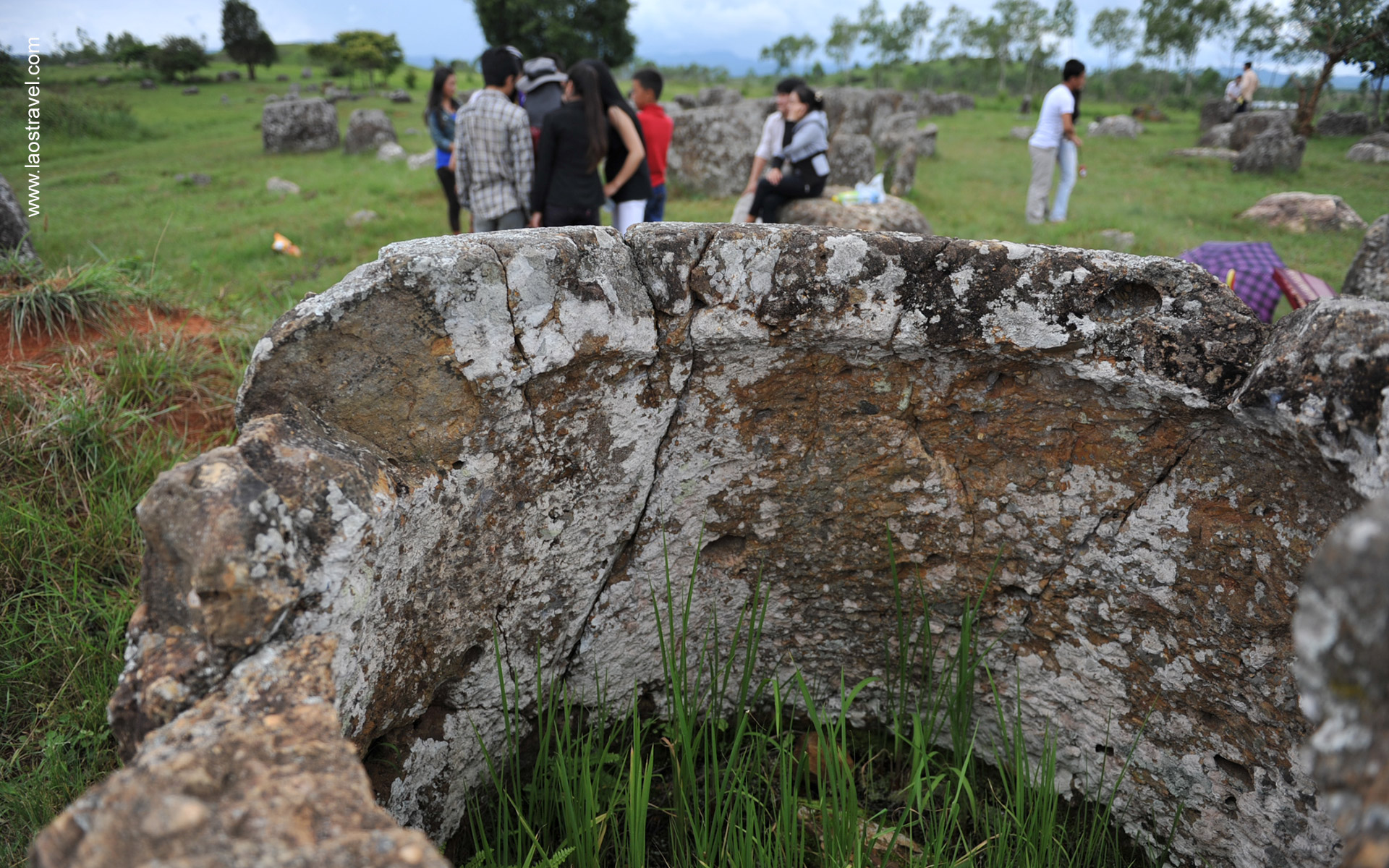
Plain of Jars are incredible historical landmarks with various size, shape and large quantity of Jars.
– The Plain of Jars is located at an historical crossroads that facilitated movement through the region, enabling trade and cultural exchange. The location is between two major cultural systems of Southeast Asia in Iron Age, including the Red River-Gulf of Tonkin system and the Mun-Mekong system. So, the distribution of the jars sites seems associated with overland routes.
– The various size, shape and large quantity of the megalithic jars which are well-crafted require technological skill to produce. Their wide distribution within Xieng Khuang Province is remarkable. The jars and the serial property that can attest to the quarrying, manufacturing, transportation and use, are the most prominent evidence of the Iron Age civilisation.
– The form, design, mostly original materials and locations of the megalithic jars, lids, secondary burials and archaeological deposits as well as their abundance, antiquity and condition create the authenticity of the serial property.
Getting in/around Phonsavan
Phonsavan is the closest town to the Plain of Jars (approx. 15 minutes from centre to Site 1) and still in its infancy for tourism compared to other places in Laos. It is also not an easily accessible place although it is getting better. There are two main choices for getting to Phonsavan: by road or by air.
By road
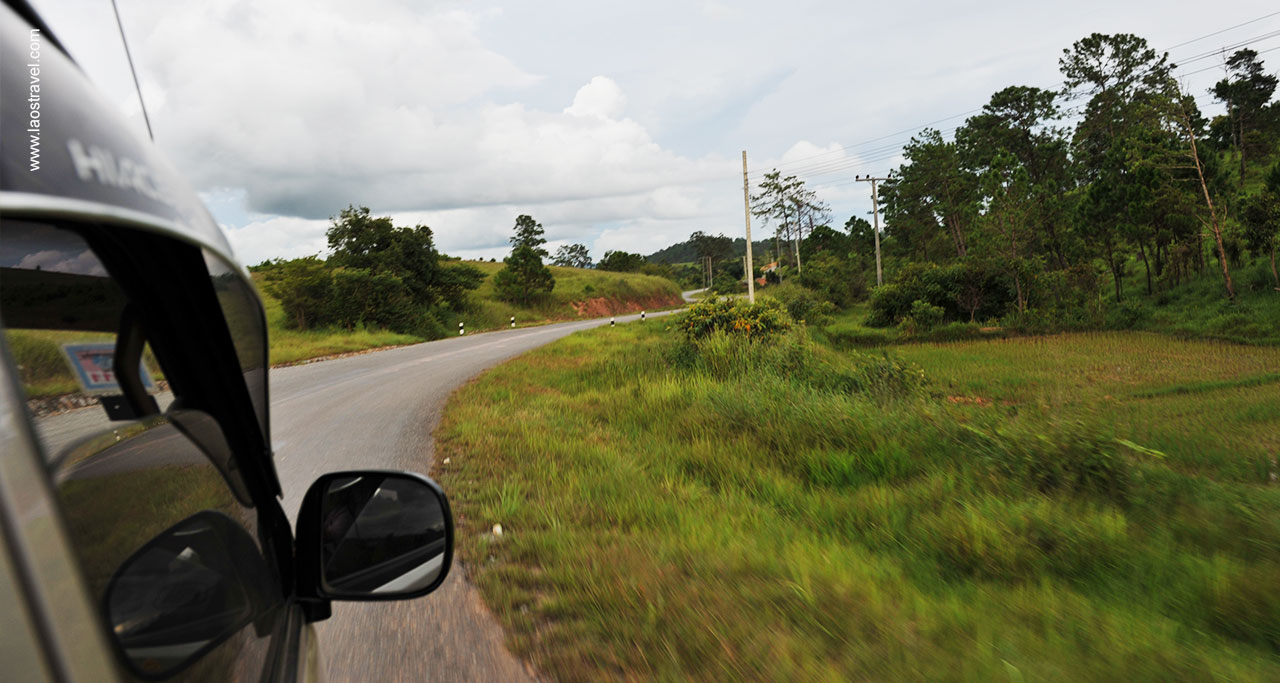
The roads are paved bring more convenient access among major destinations in Laos.
There are bus routes from most major cities of country to Phonsavan, such as Vientiane, Luang Prabang and Vang Vieng. If you are travelling from Vientiane, you can take either VIP or local buses which take about 10-12 hours. Although the roads are paved, there are plenty of bends. From Vang Vieng, the bus trip takes 7-8 hours while buses run from Luang Prabang via Route 13 and 7 in approx. 8 hours.
To get most flexibility and comfort, a private service with experienced guide and driver will absolutely work well. It also better save time without much stops along the way and in good air-conditions against the heat of Laos.
By air
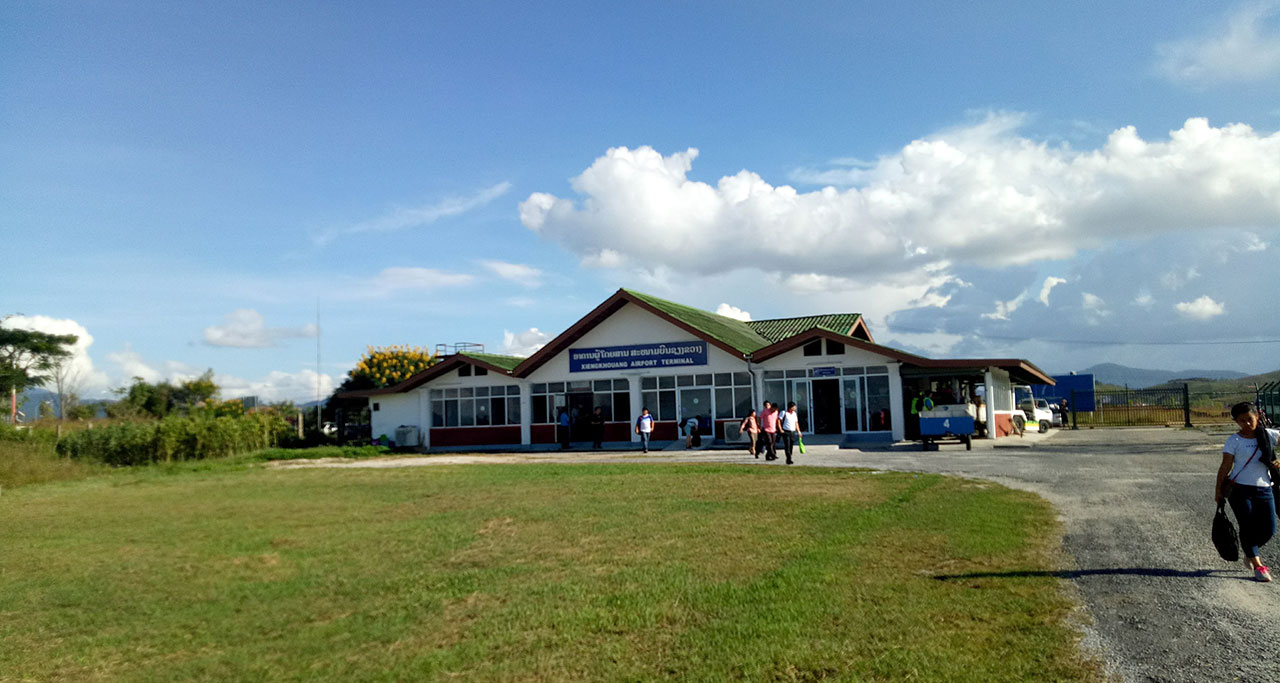
Xieng Khouang Airport – close to the centre of Phonsavan.
Xieng Khouang Airport is small airport just outside Phonsavan which has non-stop flights scheduled to 2 major destinations of Laos: Vientiane and Luang Prabang. These flights are served by two main carriers operating at this airport, they are national Laos Airlines and Laos Skyway.
Get Around
Bikes, motorbikes or cars are available for rent to get around Phonsavan. Depending on quality, a bike costs from 20,000LAK per day while it takes about 100,000LAK per day for motorbike. For a four-wheel-drive, the cost can be about US$ 50-80, including or excluding petrol according to the rental company. All prices can vary on season and availability.
To Site 1, the roads are in good condition although having some inclines, so you can rent either bicycle or motorbike. For Site 2 and 3, it can get a little tricky if it rains. Some other sites such as War Spoon Village can be visited with a guided tour. A map along with you will be a wise during this fun ride.
What to see in Plain of Jars?
As one of the most attractions of Phonsavan and Xieng Khoang Province, Plain of Jars attracts many visitors to come. Among hundreds of jars at various sites, there are 3 main sites that are the most investigated and visited in this area.
Plain of Jars – Site 1
Entrance fee: 15,000LAK/ticket
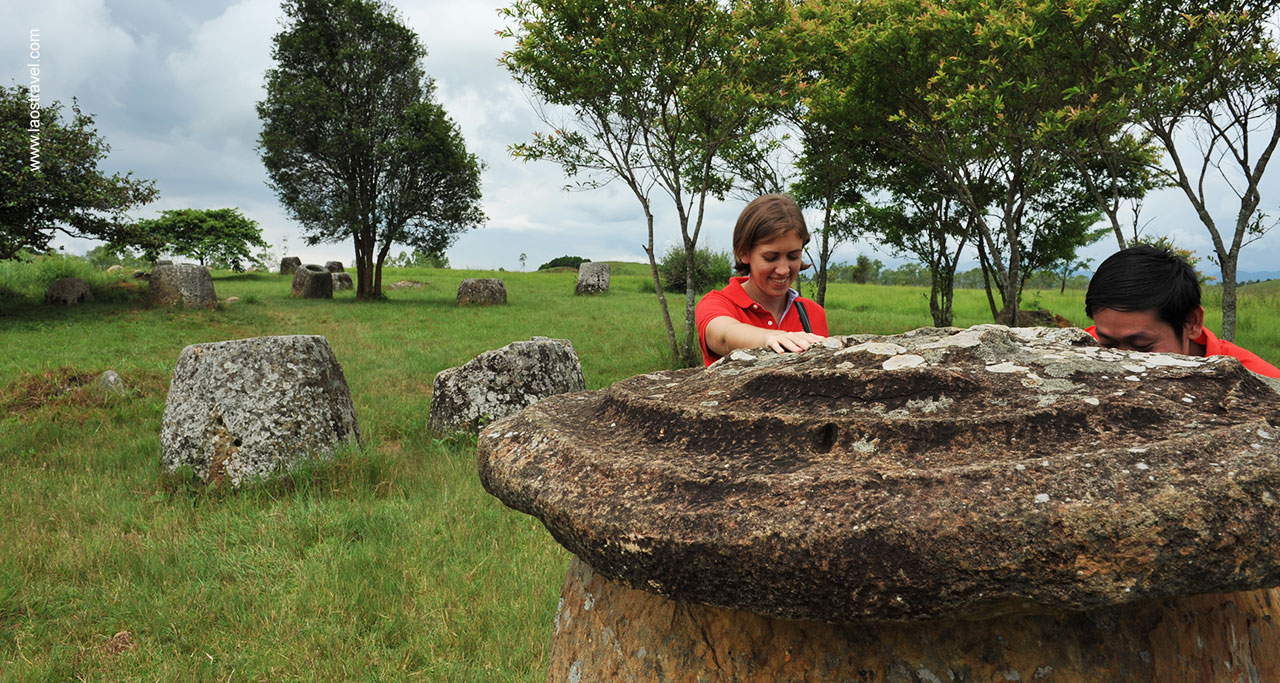
Very few of Jars with lib are left at various sites of Plain of Jars now.
Jar Site 1 is the closest to Phonsavan, just about 10 minutes of drive. This is also the biggest, easiest to access and most visited of all on the Plain of Jars. There is visitor center at the entrance which provides information and history about Plain of Jars as well as its importance role during the Second Indochina War, and community handicraft shop.
Jar Site 1 has a number of unique elements to make it a kind of one-stop-shop of all the interesting parts of the Plain of Jars, including the biggest jar (over 10 tons of weights and nearly 3m high), jar with lid, carved jars and a large cave which is thought to be an ancient crematorium.
At this site, you are also reminded of the grim war in the 60s through trenches, foxholes and bomb craters.
As the biggest site of Plain of Jars, the crowds and busy scene are unavoidable. Follow all warning signs at the site to protect yourself and these incredible objects.
Plain of Jars – Site 2
Entrance fee: 10,000LAK/ticket
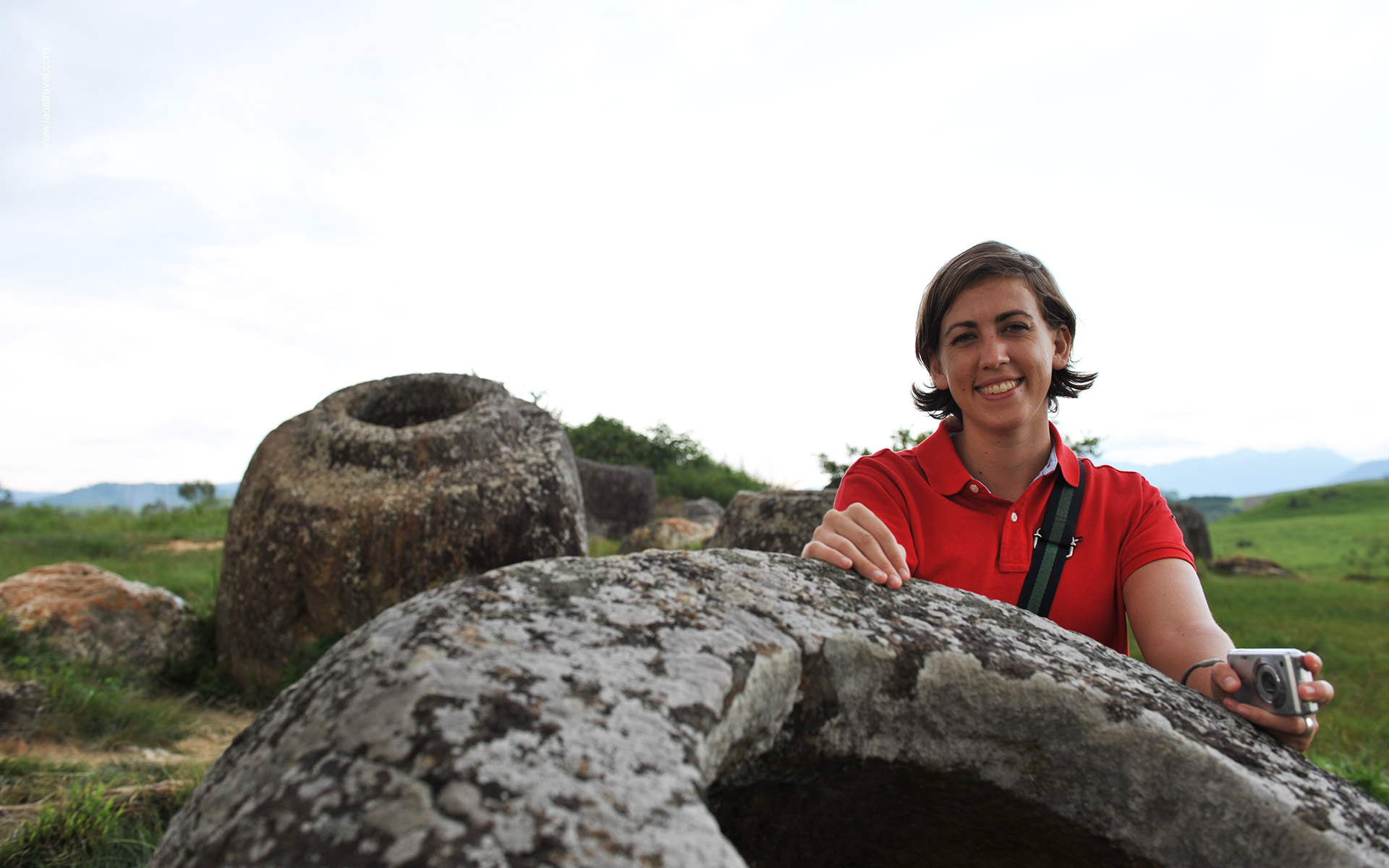
Touching the rough, time-green “milestones” lying quietly on the ground, visitors vaguely feel the great historical mysteries behind.
Further to Phonsavan is Jar Site 2 without good path which is bumpy, unpaved, dusty and properly muddy too.
Jar Site 2 is split into two by the road with the difference from each side. For one side, there are jars on the top of a small hill with dramatic views of the plains while jars secluded in a small copse of trees which bring more intimate and secretive on the other side.
Here many of the jars show the damage from roots by the effect of time and nature while others are completely split in two by their forest neighbors. This site is less touristy so visitors can feel closer to such incredible historical landmarks and more “green” with more scenic hilltop view of rice paddy fields and the plains below.
Plain of Jars – Site 3
Entrance fee: 10,000LAK/ticket
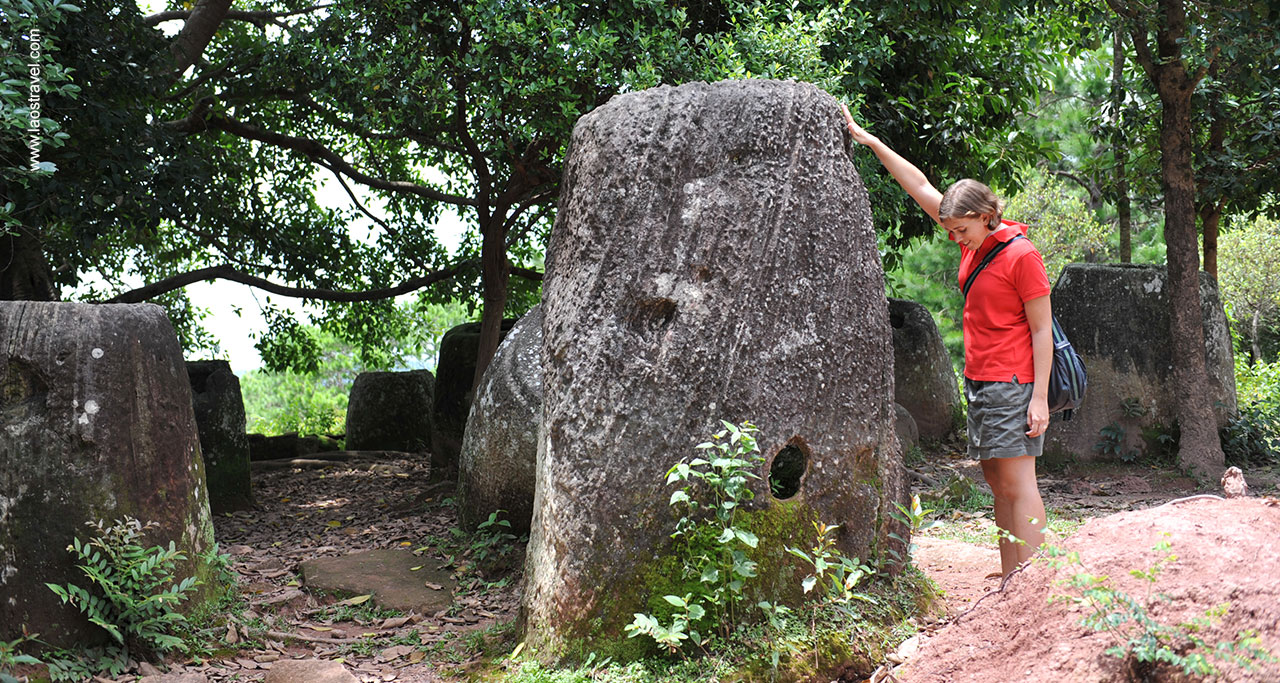
Similar to Jar Site 2, Jar Site 3 is also surrounded by a small cluster of trees with jars in less uniform (some are taller, some are thinner or some are wider).
Jar Site 3 is pretty similar to Jar Site 2 and also surrounded by a small cluster of trees. From Site 2, you can take an easy 30-min walk to Site 3 via Ban Xiengoy village. This walk between sites can make the feel of the most authentic way when you can see the farming activity and away from roads and houses.
Here, the jars are less uniform and more rectangular than those at Site 1 and some jars are so tall for visitors to see inside. For safety, visitors should carefully follow the small stone markers placed by the Mines Advisory Group (MAG) which are designed to show walk safe as this such area has been cleared of unexploded ordnance.
Ban Napia
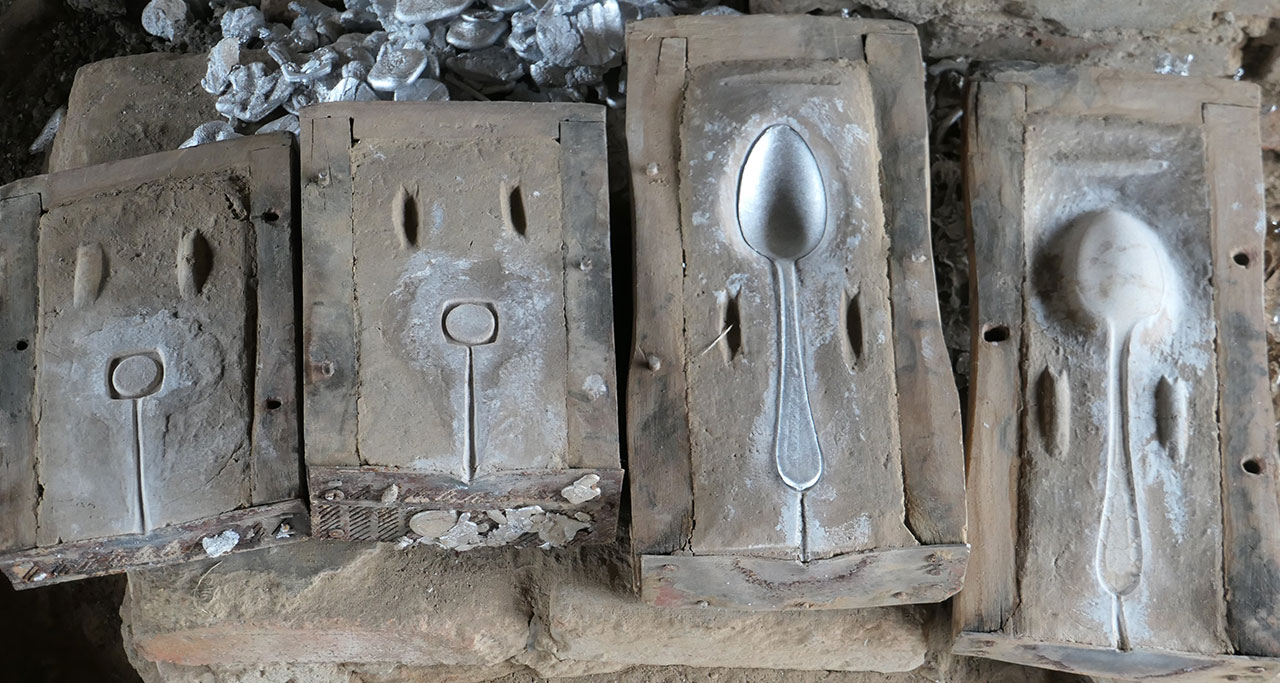
A third of 50 families in Ban Napia, or called “The War Spoon Village”, get money to support their own life by producing spoons from the casings of old bombs.
Known as nickname “The War Spoon Village”, local villagers collect the casings of old bombs, melt them down in homemade kilns and pour the liquid metal into wooden casts.
Home to around 50 families, a third of the locals in Ban Napia make money from this work. However, it is also controversial because the villagers have to face the danger from the unexploded ordnance to find way support their families.
If you have more time for Plain of Jars, there are more sites for your deeper experience, such as Site 16 (near the old capital Xieng Khouang), Site 23 (near the hot spring in Muang Kham), Site 25 (in the largely unvisited Phou Kout Dist.) and Site 52 (near Hmong village where is only accessible by foot). Just remind of safety at any site you visit.
Where to Stay in Phonsavan?
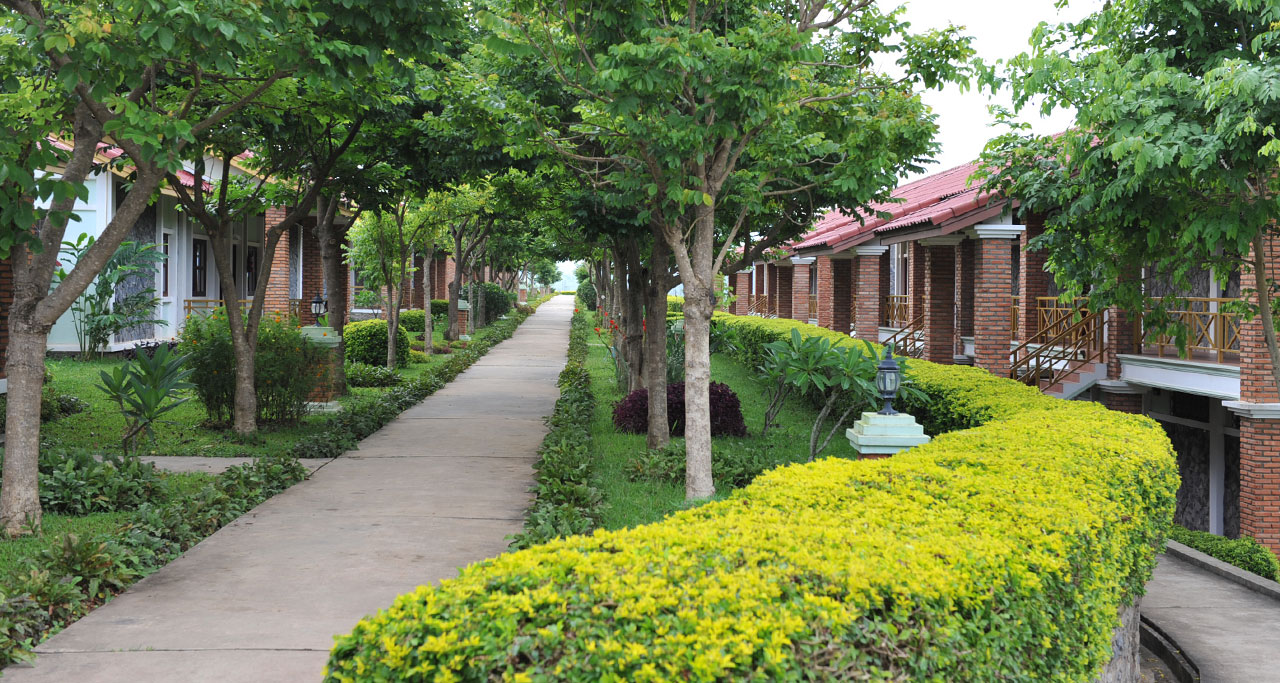
Vansana Plain of Jars
Phonsavan offers a range of properties from simple guesthouses to more luxurious hotels. Here are some suggested accommodations in Phonsavan for your comfort.
- 3* Vansana Plain Of Jars
Add: Ban Phonesavanh, Phonsavan
Tel: +856 61 213 170-3 - 3* Anoulack Khen Hotel
Add: 059/4, Ban Phonsavanxay, Pek District, Xiengkhouang Province
Tel: +856 61 213 599 - 3* Maly Hotel
Add: P.O.Box 649A Phonsavanh, Paek District, Xiengkhouang Province
Tel: +856 61 312 031
Plain of Jars Facts
- The tallest jar is 3m tall, the heaviest jar is over 10 tons;
- More than 90 jar sites have been identified in Xieng Khouang Province from one to 400 stone jars at each site;
- Except of a single jar at Site 1, the stone jars are undecorated and mostly no lid;
- Jar Site 1 is the most investigated and visited which is also closest to the town of Phonsavan;
- Jars are various in size, shape or even materials;
- Some jars were transported over 10km from where they were made;
- The Plain of Jars was heavily bombed by the U.S. Air Force from 1964-1969. So, there are still large quantity of unexploded bombs in the area, especially cluster munitions, which limits free movement:
- Opening hours are daily from 9 am until 5 pm.
Remaining the most mysterious of Asia’s ancient sights, Plain of Jars is worth your visit to have open wide view of these incredible historical landmarks. At Laos Travel, we can provide you many flexibly customized packages to make your Laos Trip as your own desire. Contact us anytime and experience your great journey to Laos soon.


